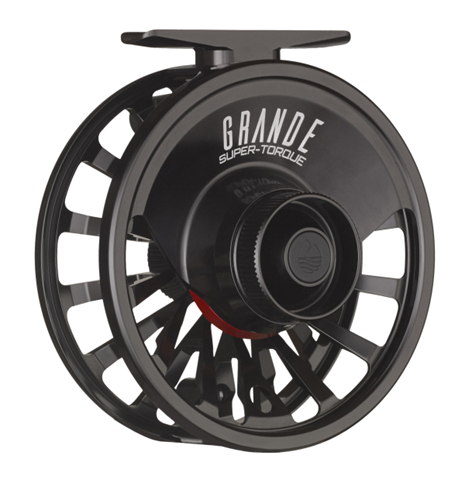Pt 2 - Fly Fishing: the Intricate Stuff
The fly fishing rod is the backbone of your fly-fishing setup, and understanding its basics is crucial. While fly rods have numerous nuances, choosing the right rod will depend on two main factors:
- What you’re fishing for
- The size of the fly
Fly rods are classified by weight, ranging from 00 to 16. The smaller the number, the lighter the rod and the narrower and more delicate the blank.
In most cases, you choose a rod based on the size of the fly you intend to cast. For example, a 3 weight is an excellent choice for tiny flies and small mountain streams, ideal for brook trout. Conversely, if you plan to pursue a mature Chinook in saltwater using a foot-long baitfish-patterned streamer, you’ll want a 16 weight rod.
While you can easily throw a small fly on a larger weight rod, throwing a bigger fly on a smaller weight rod will prove frustrating and extremely difficult. However, there is an exception to the fly/rod rule. Large, powerful fish like predatory brown trout or aggressive coho salmon eat small flies but you should never target them with a 5 weight rod, even if you could easily cast that fly with that size rod.
A 5 weight rod would be underweighted for that size fish. In that instance, you’d need a larger sized rod for a snowball’s chance in a hot place of landing that fish with your rod still intact. The standard length of a fly rod is 9 feet, but they are available in shorter rods and longer rods for specific techniques. Weight, however, isn’t the only thing to consider when buying a fly rod.
Fly Rod Action
Fly rods are also characterized by their action, which is their overall stiffness which relates directly to how they bend, and what their recovery time is (how quickly the rod returns to its straight position). There are three main actions: slow, medium (also known as moderate or moderate-fast), and fast.
A slow action rod is considered a “soft rod” and will bend starting just above the butt section of the rod (where the cork handle is) and bend all the way to the tip. Slow action rods typically resemble a wet noodle and are normally made of fiberglass. Older rods of this type were made from bamboo. They excel in short distances and delicate presentations, making them excellent specialty rods for small streams. However, they tend to be challenging to cast a for new fly angler and have a longer recovery than other rods.
A medium action rod will bend from the mid-section all the way to the tip (with moderate-fast bending a little higher up the rod than moderate). Medium action rods, in my opinion, are the easiest for new and average anglers to cast. They offer great versatility and are typically made of fiberglass or graphite, with the majority made of graphite. These rods provide the most flexibility in casting and presentation and have a medium recovery time.
A fast action “stiff rod” will bend only at the tip of the rod. The fast action fly rods are made from graphite or a boron/graphite mix and provide superior fighting power, enabling you to muscle big fish out of cover. They are excellent choices for windy conditions potentially such as a river estuary on either coast of Vancouver Island. Fast action rods have a quick recovery time, making them easier to punch through wind.
For novice fly anglers who are looking to purchase their first rod in freshwater, a 9-foot 5-weight rod with a medium to medium-fast action is a solid choice. This is a decent overall freshwater rod that will take you from the a quiet trout stream, and out to the faster water where bigger stronger salmon hang out.
While everything from rod weights to flies and all that’s in between can appear daunting, fly fishing is much easier than you think once you break down the basics. So, let’s “eat the elephant one bite at a time,” and get started with the basics – the fly rod setup.
For novice fly anglers who are looking to purchase their first rod in freshwater, a 9-foot 5-weight rod with a medium to medium-fast action is a solid choice. This is a decent overall freshwater rod that will allow you to fish in a variety of environments targeting various fish species. If you are looking for your first saltwater rod, that will depend on what species you’re targeting, but a good overall beach fly rod would be a 9-foot, 8-weight with a moderate-fast to fast action depending on the wind.
You can find all the necessary information about a fly rod by examining the blank near the cork handle. Fly rods are generally marked with weight, length and number of pieces. A 5wt 9-0 4 pc means a 9 feet long, 5-weight rod that comes in four pieces.
Since each person’s casting style is a little different, it’s beneficial to head to the local shop that not only carries fly rods but possesses a level of expertise. For us that shop is Robinson's Sporting Goods on Broad Street. No one else comes close to the expertise offered up by Matt and Zack!
Test out various rods before you buy one. Most entry level fly rods on the market today are decent and new and average anglers would have a difficult time telling the nuanced differences between a $100 rod and a $1000 rod, so don’t be duped into just buying the most expensive one. Rule of thumb here: buy the rod in your price point that feels good in your hand. When you cast it, the rod should feel like an extension of your arm.....
Edited by AllseeingEye, 28 May 2024 - 11:32 PM.















